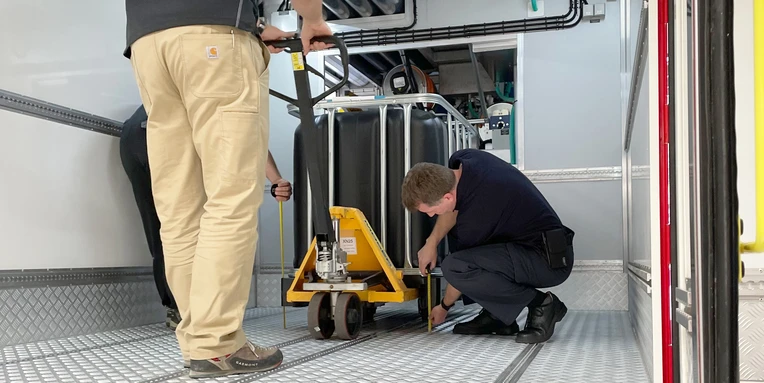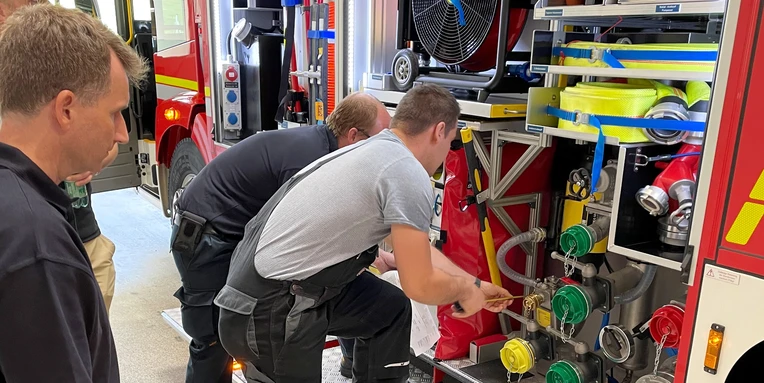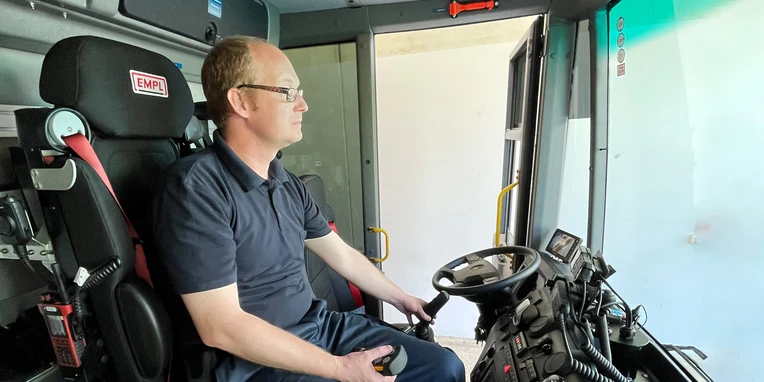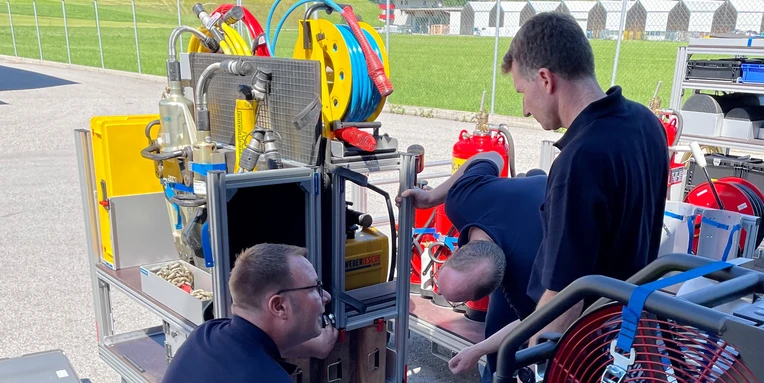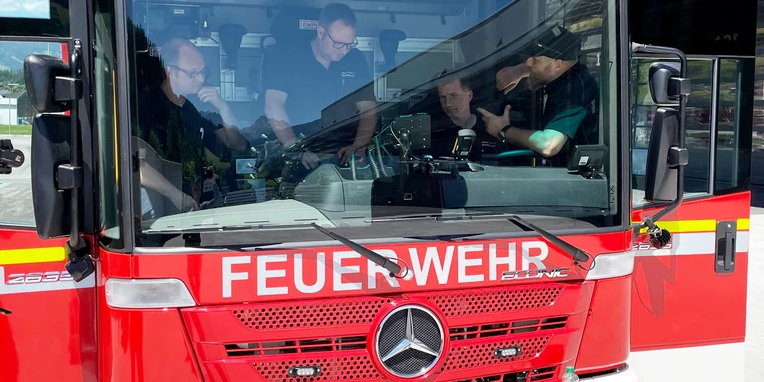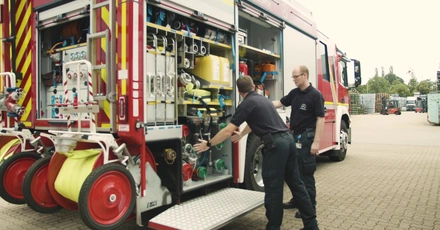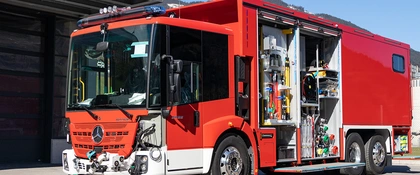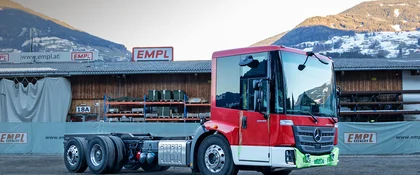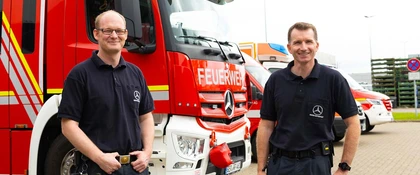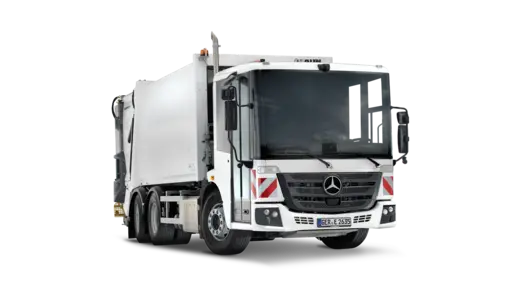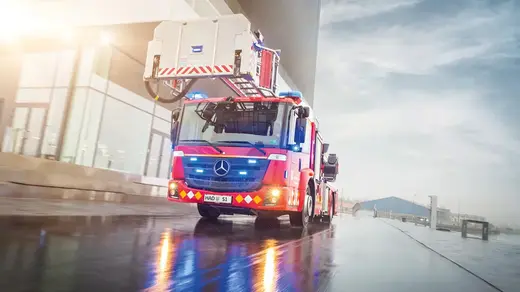The Econic industrial fire engine
on the test stand.
Now things are getting serious: We accompany the Wörth plant fire brigade to Zillertal in the fourth part of our series about the Econic 2635 as an industrial fire engine. The vehicle’s final acceptance takes place at the body manufacturer EMPL in Kaltenbach, where the Econic is put through its paces. Once the final touches have been agreed, everyone involved is certain that the special truck will deliver exactly what it promises: a solution to various perils in any fire-fighting situation.
Each vehicle is one of a kind.
Thirteen months have gone by since the vehicle body for the Wörth plant fire brigade’s Econic was planned at the manufacturer EMPL. This is not unusual, but is rather due to the high demands placed on the unique Special Truck as well as the diligence of all involved. After all, a vehicle that is to fulfil both fire-fighting and logistical tasks needs to be carefully thought out and implemented.
The concept of the new industrial fire engine was developed with an eye on the alternative drive technologies that will be used in the future in the truck plant in Wörth. The design of the Econic with its modular technology allows the plant fire brigade to respond to current and future dangers with flexibility and efficiency. Close coordination between the fire brigade and the body manufacturer is necessary to satisfy expectations for the vehicle.
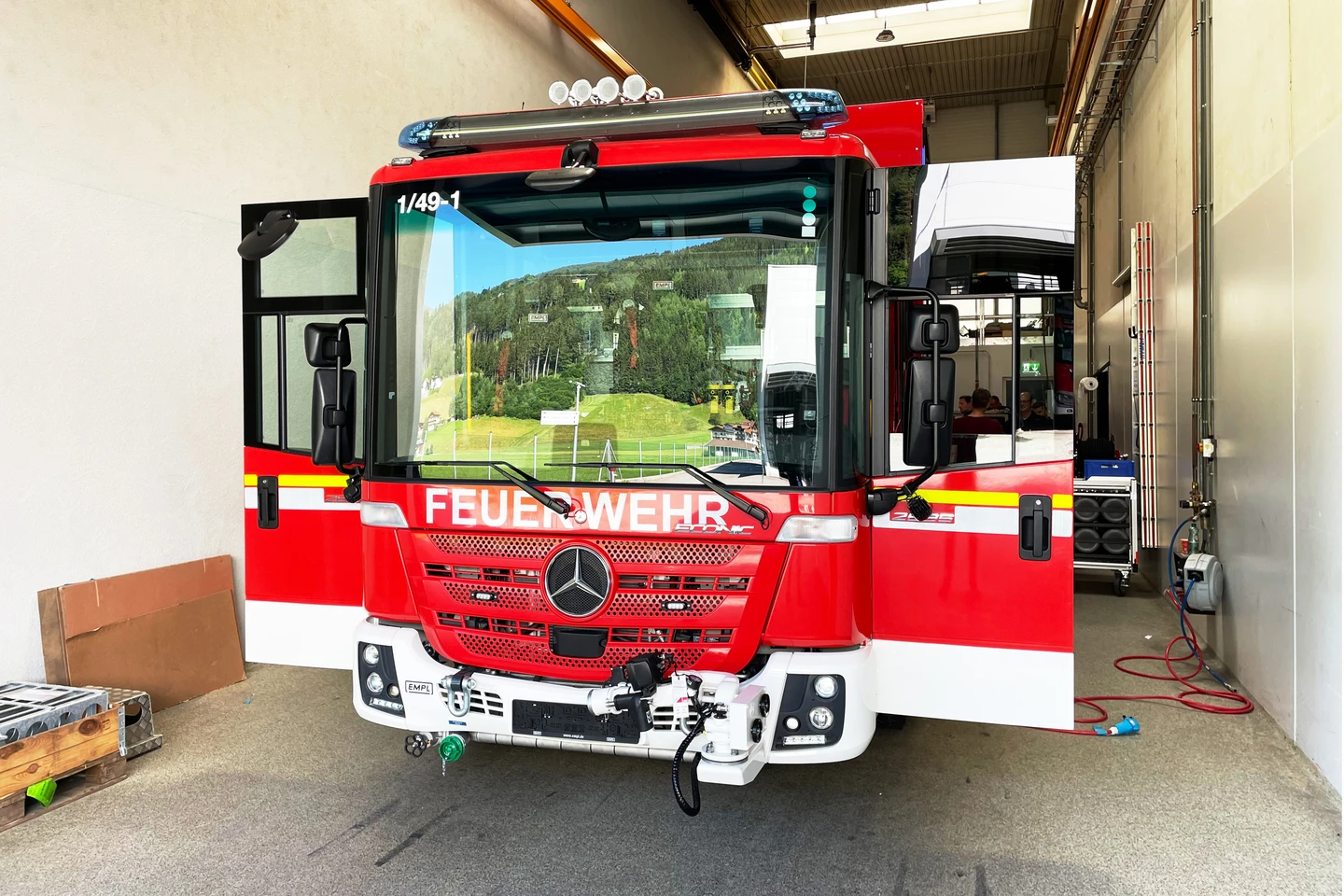
After witnessing the bodyshell discussion in the last part of the series, the next step was the vehicle’s acceptance by the plant fire brigade. It is important to test the Econic with all its technology, its equipment and structural elements, down to the smallest detail. The EMPL experts can only finalise everything and deliver the vehicle when the very last compartment for stowing equipment has also been inspected.
A genuine all-rounder.
Initially, the first item on the agenda appears simple, but it is actually the basis for the Econic’s suitability. Together with Thomas Moigg, Fire Brigade Vehicle Sales Manager at EMPL, the plant fire brigade goes through the specifications: Have all additional fittings been installed? Are the equipment and material in the correct positions? Are there any obvious defects? Due to the unique nature of the design, this acceptance phase requires precisely the thoroughness and experience that the Wörth plant fire brigade also demonstrates every day in routine fire extinguishing procedures.
Both the arrangement and the load capacity of the attachment area make the Econic a veritable all-rounder in the plant fire brigade’s fleet. The roller containers stowed in the vehicle can accommodate a wide range of equipment sets. This means, for example, that the Special Truck can take on the load of other emergency services vehicles when they need to be repaired or serviced. To keep loading and unloading as smoothly as possible during operation, every single container is checked for the smallest irregularities during the acceptance procedure.
The Econic is unique in this design, a poster child for us at the Wörth site. With this vehicle, we are taking another step on the road to ensuring future viability.
Marc Knoll, Deputy Head, Wörth plant fire brigade
